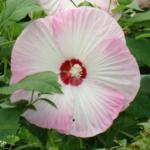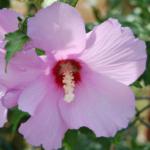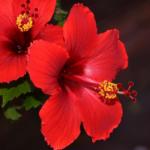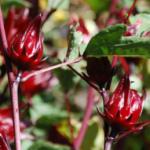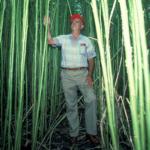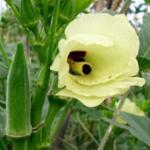 SKC Films Library SKC Films Library |
| SKC Films Library >> Science >> Botany >> Flowering Plants >> Family Malvaceae (Mallows) |
| Hibiscus [hI bis'kus] a genus of about 200-220 species of flowering plants native to warm temperate, subtropical and tropical regions throughout the world The genus Hibiscus includes both annual and perennial herbaceous plants, woody shrubs, and small trees. The leaves are alternate, simple, ovate to lanceolate, often with a toothed or lobed margin. The flowers are large, conspicuous, trumpet-shaped, with five or more petals, measuring up to 6 inches across. In the wild, hibiscus flowers range in color from white to brilliant red, purple or yellow. The fruit is a dry five-lobed capsule, containing several seeds in each lobe, which are released when the capsule splits open at maturity. Scientific Classification division Magnoliophyta Species and Varieties The Swamp Rose Mallow, Hibiscus moscheutos, grows wild in marshes in the eastern United States, sometimes growing 7 feet high. It has white or pink flowers 4 to 7 inches across. The Rose of Sharon, Hibiscus syriacus, is native to Asia, and is the national flower of South Korea. Gardeners in the United States often cultivate it as a small tree or shrub for borders and background. Its flowers resemble those of the hollyhock. The Chinese Hibiscus, Hibiscus rosa-sinensis, is the national flower of Malaysia. It has striking blossoms that the Chinese sometimes use to stain their eyebrows and teeth. Roselle, Hibiscus sabdariffa, is used as a vegetable and to make herbal teas and jams, especially in the Caribbean. Kenaf, Hibiscus cannabinus, is extensively used in paper making. Okra, Hibiscus esculentus, is a summer annual of the vegetable garden. Its sticky pods are used in soups and stews. |
| SKC Films Library
>> Science
>> Botany >> Flowering Plants
>> Family
Malvaceae (Mallows) This page was last updated on May 15, 2017. |
